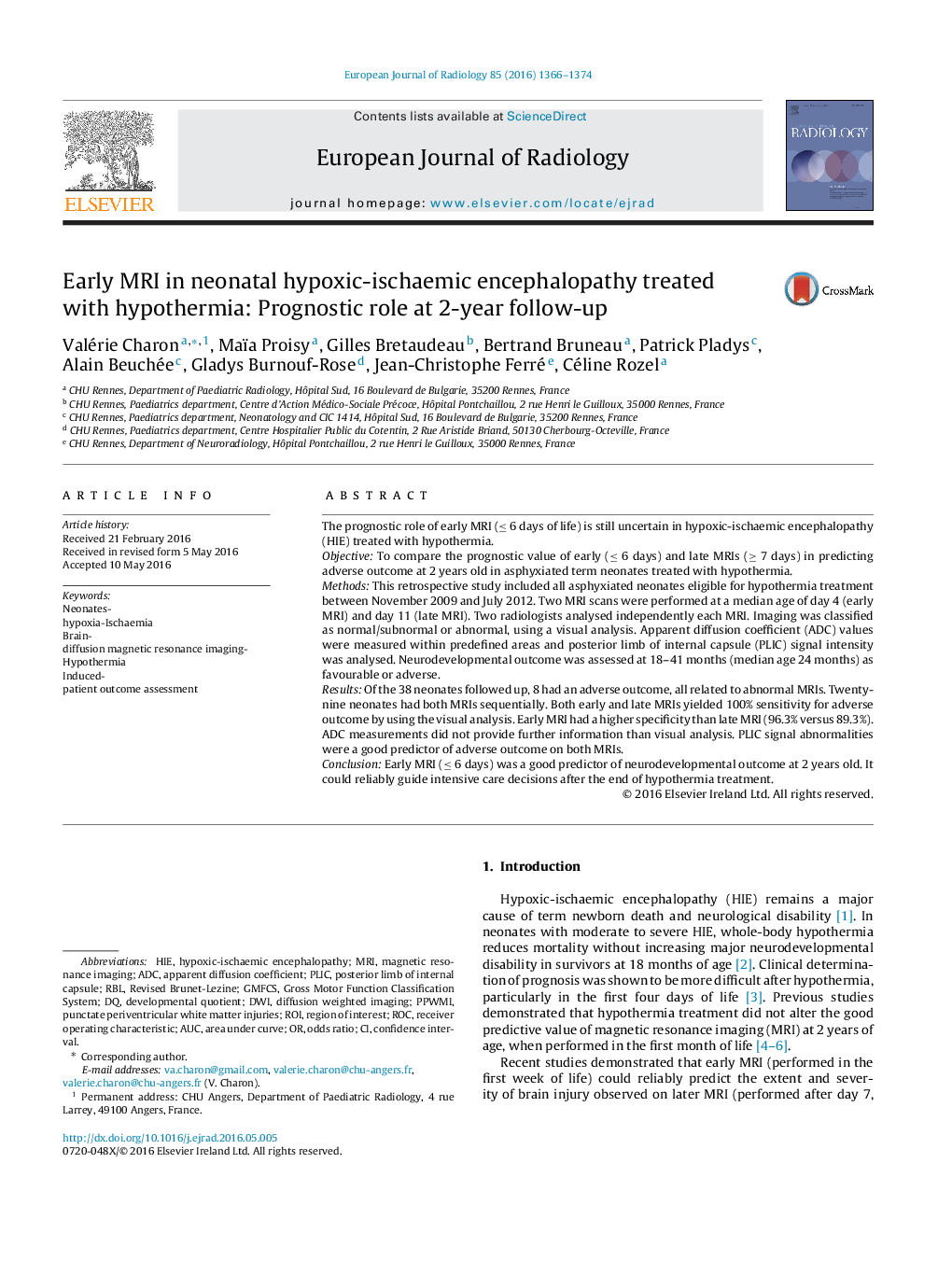| کد مقاله | کد نشریه | سال انتشار | مقاله انگلیسی | نسخه تمام متن |
|---|---|---|---|---|
| 6242929 | 1609739 | 2016 | 9 صفحه PDF | دانلود رایگان |

- Early (â¤6 days) and later MRIs were both good adverse outcome predictors in HIE.
- Both MRIs had 100% sensitivity for adverse outcome.
- Early MRI had higher specificity and positive predictive value than late MRI.
- Early MRI could reliably help parents and neonatologists with intensive care decisions.
The prognostic role of early MRI (⤠6 days of life) is still uncertain in hypoxic-ischaemic encephalopathy (HIE) treated with hypothermia.ObjectiveTo compare the prognostic value of early (⤠6 days) and late MRIs (⥠7 days) in predicting adverse outcome at 2 years old in asphyxiated term neonates treated with hypothermia.MethodsThis retrospective study included all asphyxiated neonates eligible for hypothermia treatment between November 2009 and July 2012. Two MRI scans were performed at a median age of day 4 (early MRI) and day 11 (late MRI). Two radiologists analysed independently each MRI. Imaging was classified as normal/subnormal or abnormal, using a visual analysis. Apparent diffusion coefficient (ADC) values were measured within predefined areas and posterior limb of internal capsule (PLIC) signal intensity was analysed. Neurodevelopmental outcome was assessed at 18-41 months (median age 24 months) as favourable or adverse.ResultsOf the 38 neonates followed up, 8 had an adverse outcome, all related to abnormal MRIs. Twenty-nine neonates had both MRIs sequentially. Both early and late MRIs yielded 100% sensitivity for adverse outcome by using the visual analysis. Early MRI had a higher specificity than late MRI (96.3% versus 89.3%). ADC measurements did not provide further information than visual analysis. PLIC signal abnormalities were a good predictor of adverse outcome on both MRIs.ConclusionEarly MRI (⤠6 days) was a good predictor of neurodevelopmental outcome at 2 years old. It could reliably guide intensive care decisions after the end of hypothermia treatment.
Journal: European Journal of Radiology - Volume 85, Issue 8, August 2016, Pages 1366-1374